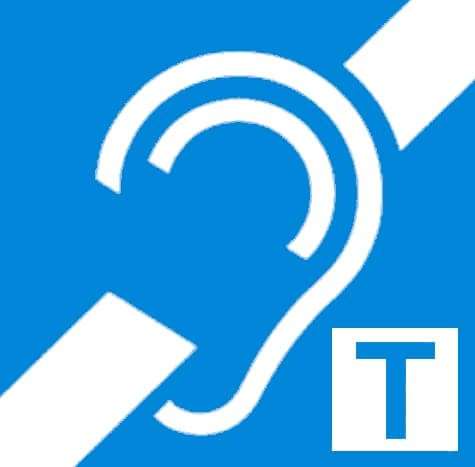As a person dealing with
hearing loss, it’s easy to feel isolated. In conversation, it becomes a constant battle of having to ask both friends and strangers to speak up or slow down - just to accommodate your needs. It’s even harder still to navigate institutions that don’t seem to be properly equipped for those suffering from hearing impairment. Thankfully, more and more private businesses and public spaces are using Loop technology to accommodate the
hearing loss community. Though Britain seems to be leading the way - most churches, cathedrals, and auditoriums now have Audio Frequency Induction Loop Systems, let’s take this opportunity to educate ourselves and advocate for this incredibly efficient (and cost-effective) technology to be installed in as many places as possible within our local communities here at home.
So… What Is “Loop Technology”?
Unlike using an Assistive Hearing Device, which requires you to turn off your
hearing aid, a Hearing Loop functions as a type of sound system that works with your aid to create an uninterrupted stream of clear sound “It’s the equivalent of a wheelchair ramp for people who suffer from hearing loss,” says David G. Myers, a professor of psychology at Hope College. The Loop itself provides a wireless, magnetic signal that is picked up by the wearer’s hearing aid when it’s set to its “T” or Telecoil setting. Though most hearing aids do come with Loop technology, we here at Audicus certainly recommend you double-check before making your next purchase.
How Does This System Work?
Simply put, a Hearing Loop is a wire that circles the perimeter of any room (large or small) which connects to a pre-existing sound system and transmits the sound electromagnetically. This sound is then picked up by the telecoil in your hearing aid or cochlear implant, functioning as your own personal loudspeaker and customized to your hearing loss specifications.
How Does The Loop System Improve The Quality Of Sound?
Extraneous room sounds and echoes are basically eliminated, due to the direct wireless connection to the audio signal carried in the loop wire from the audio source. Unlike using a headset or other assistive device, Loop Systems provide greater sound clarity and speech intelligibility, making your listening experience a whole lot more enjoyable and relaxing.
And What’s Telecoil?
It’s a small copper coil found in most hearing aids and built into cochlear implant processors, activated by a “T” switch. This technology was originally used to boost magnetic signals from the telephone handset and all landline (and some cellphones) are designated by law to be used with a Telecoil.
Can I install A Loop System In My Home?
Absolutely! The wire loop can be installed under carpet, behind baseboards, in ceiling - wherever’s convenient for you.
Where Else Can I Expect To Find Loop Technology?
Most “transient” or short-term listening environments, such as subway ticket offices, hotel check-in desks, bank teller windows are spaces where it’d be impractical to issue assistive listening devices. In NYC alone, Loops have been installed in the ticket windows of Yankee Stadium and Citi Field, the Apple store in Soho, and in kiosks at some of NYC’s most iconic museums.
How Do I Advocate For More Looping Systems Installed In My Community?
Juliette Sterkens, AuD is a Hearing Loop advocate for the HLAA and travels across America meeting with HLAA Chapters and audiologists about the importance of Loop Systems and how you can get a Loop project started in your very own community. She has a fantastic webinar, found
here, and I encourage you to check it out!
So reader, we here at
Audicus would love to know: what spaces would YOU like looped? Do you feel your city has made enough of this kind of technology available for the
hearing loss community in your town?
By: Ariana Seigel
Sources:
Loop America,
Hearing Loss.org



